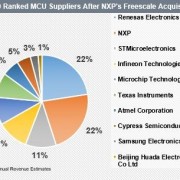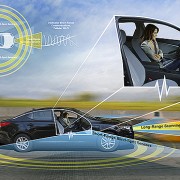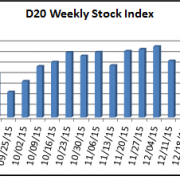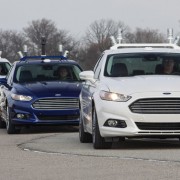Autonomous Vehicle-Testing Dollars Entice States
Burney Simpson
States are lining up for their share of driverless vehicle research dollars but each has its own approach to getting at the sizzling bacon of business bucks.
In Tennessee, State Sen. Mark Green has introduced legislation that will allow testing of Level 4 autonomous vehicles in the state. Level 4 vehicles can operate without any human intervention.
The Clarksville Republican believes testing will lead auto OEMs to consider manufacturing the vehicles in the state. Green emphasized the economic benefits of the technology in an interview with The Leaf-Chronicle.
“Because these companies that are going to manufacture them, and create all those jobs, are going to go where they can test their vehicles,” said Green.
California, Florida, Michigan, Nevada and the District of Columbia have enacted legislation making it legal to test autonomous vehicles. Virginia Gov. Terry McAuliffe last year proclaimed the state would allow the testing.
Green’s bill, SB 1561, is scheduled to be heard by the Senate Transportation Committee on Monday, February 1. A similar bill, HB 1564, has been introduced in the Tennessee House by Rep. Mike Carter, an Ooltewah Republican.
Green’s proposal would require a human operator for any autonomous vehicle being tested, and impose a use tax of one cent per mile for an autonomous vehicle with two axles, and 2.6 cents a mile for those with more than two axles.
MASSACHUSETTS MEETS
In Massachusetts, several agencies and large cities are working to make self-driving vehicles legal and ensure the state becomes a research center on the technology.
Toyota has already invested $50 million in a research facility it will operate with the Massachusetts Institute of Technology.
Meanwhile, Boston is seeking $50 million from the US DOT to integrate self-driving vehicles in its borders, and the city of Somerville has partnered with Audi to test self-parking cars.
On February 9 the state’s Department of Transportation and the Office of Housing and Economic Development are scheduled to meet with Google, Tesla, MIT, Toyota, Audi, and Uber, to discuss opportunities for self-driving vehicles, according to the Boston Herald.
MARYLAND MEANDERS
Maryland appears to be less ambitious. It is scheduled to consider matching bills in its state House and Senate that call for $50,000 annually to fund a task force that will study the issue of self-driving vehicles.
The task force would work this year and next, and report its findings by 2018, for a total cost of $100,000.
In the House, Del. Pamela Beidle introduced HB 8, and Sen. Andrew Serafini introduced SB 126. Beidle’s proposal was scheduled to be heard today, and the Senate Judicial Proceedings Committee is to consider SB 126 next Tuesday.
The problem here is that the same two legislators proposed similar bills last year, but called for $100,000 per year in funding. Beidle’s proposal sailed through the House but the Senate shot down Serafini’s measure.
Photo of Bacon by Martin Cathrae, 2008.




